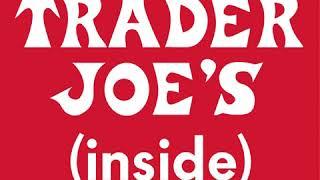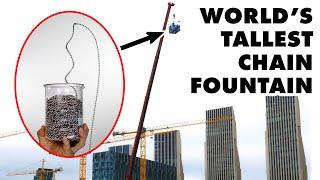Why is Lumber so expensive? | Supply chain issues explained
Description
Supply chain issues. One of the most talked about phrases over the last year and apparently the reason behind every shortage. Whether it was a toilet paper, microprocessors, spray foam raw material, rubber for car tires and, of course, wood.
Link to my Patreon page: https://www.patreon.com/Belinda_Carr
Chapters
0:00 Introduction
0:15 Contributing Factors
2:24 Cure vs Problem
2:54 Lumber Futures
4:00 Price Increases
4:31 Solutions
6:10 Concerns
6:37 Positive take away
7:35 Conclusion
Let’s rewind to March of 2020 and examine the sequence of events. The global pandemic and subsequent lockdowns caused sawmills lumber dealers to lay off workers and cut production by 30%. Mills also had to limit shift work to comply with social distancing rules. Since remodels and new construction were slow in 2019, owners expected a bigger pullback in 2020. Instead, the housing market had an unexpected boom. Remote working caused people to move out of expensive apartments in cities to houses in the suburbs. Low interest rates for both home mortgages and new construction financing were an added incentive. Homeowners, stuck in their houses with nowhere to go, took on more DIY remodels like porch additions, decks, and bathroom remodels. Essentially, we experienced a negative supply shock and positive demand shock. We had an extremely active Atlantic hurricane season in 2020 which led to thousands of rebuilds. There were also 57,000 wildfires and 10.3 million acres burned which cut lumber supply. 20% tariffs on Canadian lumber were imposed in 2017, which could have contributed to the increasing lumber prices. Another reason is the mountain pine beetle infestation in British Columbia. In any ordinary year, that demand would have been easily met but the lockdown throttled supply. Lumber Futures are now over $1200 per thousand board feet, an increase of 275% in 1 year.
So, do we see any relief in sight? Well, in order for prices to come down, shutdowns within the lumber industry will need to end and suppliers have to operate at full capacity to only catch up with the backlog of demand, but also meet the new higher current and future demand. Multi-family and commercial projects have already stalled, but single family homes are still popular. However, at a certain price point, builders and new homeowners will eventually be turned away by sky high prices and will halt their plans for new builds and renovations.
Many builders are now switching from stick framing to ICF framing because their costs are now comparable. Speculators expect the cost of lumber to level off this year and possibly come back down to reasonable levels at the end of the year. Hardwood hasn’t been surging the way softwood like southern yellow pine has, so that might become more popular. Steel was becoming an attractive alternative to wood, until those futures started surging in August 2020. The US has also been increasing lumber imports from Europe since Canada has been reducing production volumes.
I am concerned about the extreme shortcuts that builders will take to keep costs low since their profit margins are shrinking. I’ve seen the quality of suburban homes decline before the pandemic. I’m worried that we’re going to build disposable homes with short lifespans just to meet the insane demand. I’m also concerned about stick frame builders constructing ICF homes without the necessary knowledge and experience.
On a positive note, I hope this supply chain disruption helps the construction industry realize how wasteful they are. The EPS estimates that 230 to 530 million tons of Construction and Demolition waste are produced each year in the US. I hope they start to collect and recycle wood scraps into engineered wood products. I hope that automation and prefab become more popular since they typically reduce timber waste by around 75%. Lastly, I hope the construction industry now realizes the value of diversification. Lumber is so cheap, well it was cheap, because the demand is high, which leads to increased competition in the market and lower prices compared to other building materials. But, we now see the danger of putting all our eggs in one basket and the fragility of our supply chain.
--------------------
SOURCES:
--------------------
Fluffy by Smith The Mister https://smiththemister.bandcamp.com
Smith The Mister https://bit.ly/Smith-The-Mister-YT
Free Download / Stream: https://bit.ly/stm-fluffy
Music promoted by Audio Library https://youtu.be/OM9G3nyLT_w
---------------------
Disclaimer: This video was created for educational/informational purposes and qualifies as Fair Use. If you are the creator or own the footage featured in this video and have reservations please notify me via Youtube comments or email and I will accommodate you
#lumber #inflation #recession #lumberfutures #futures #construction #design #homebuilding







![Top 10 Digital Transformation Technologies [ERP, CRM, HCM, Supply Chain Management, eCommerce, etc.]](https://no-mar.com/uploads/thumbs/469617140-1.jpg)













Comments